Watering Hollyhocks: How And When To Water Alcea Rosea
They are some of the most statuesque, elegant flowering plants you can grow in beds and borders, so make sure you’re watering hollyhocks well to keep them looking their best
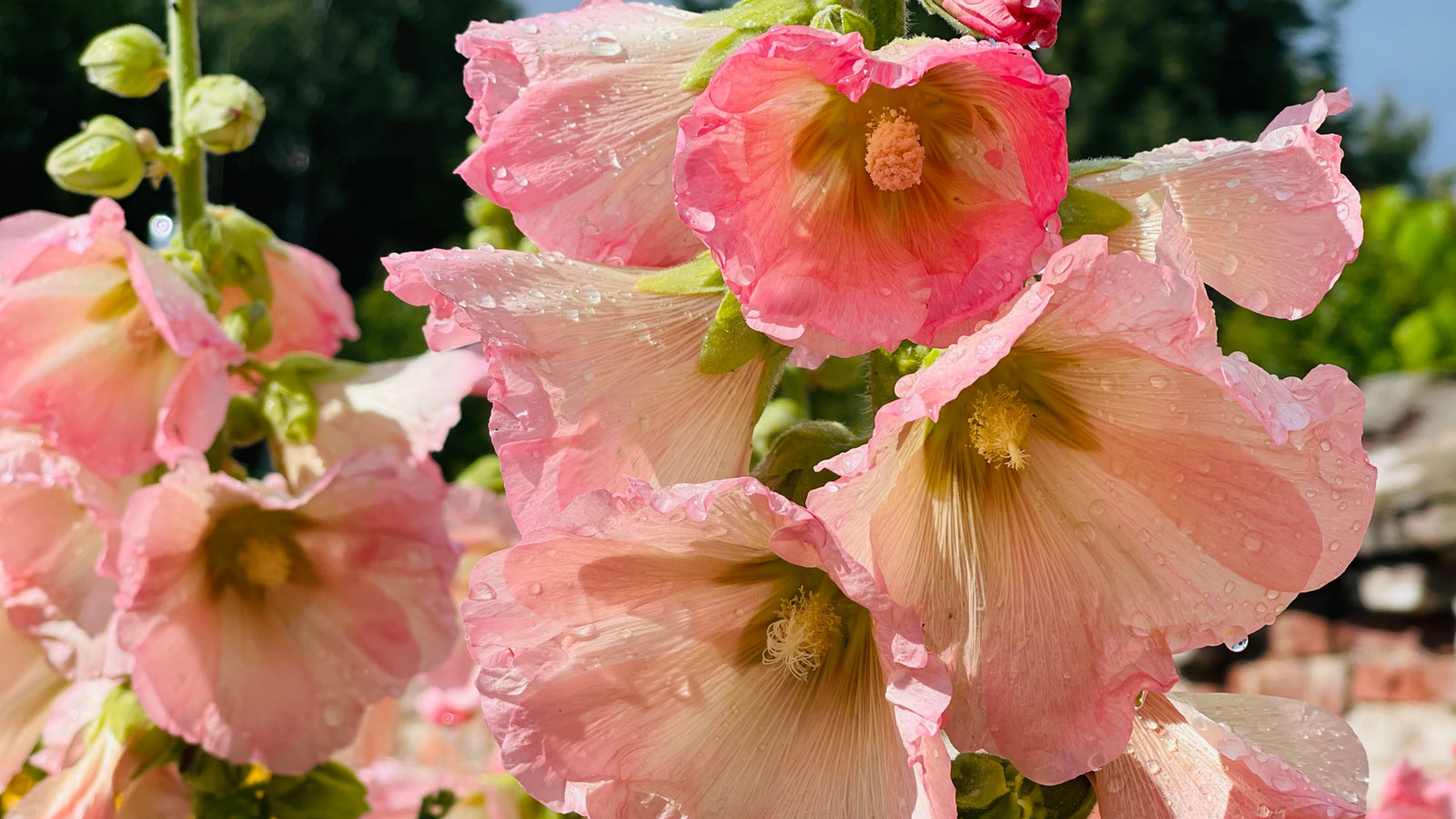

Steeped in tradition, hollyhocks often grace the borders of cottage gardens and mixed beds. Their awe-inspiring spikes, with large colorful blooms, are coveted by both growers and passing pollinators. Though their stately beauty may lead one to think otherwise, this elegant biennial is easy to grow – and watering hollyhocks doesn’t have to be problematic.
You just need to get the timings and measurements right, and make certain that beds remain consistently moist throughout the season. But exactly how much water do hollyhocks need, and when? Read on to find out…
When Hollyhocks Need the Most Watering
Though these tall flowering plants can tolerate brief periods of drought, routine irrigation is essential for the development of both the stems and buds. In terms of specific hollyhock watering requirements, the frequency of watering will vary from one location to the next.
If your region receives less than approximately an inch (2.5cm) of water per week in summer, consider adding hydration to your list of garden chores. Routine flower watering is also beneficial where hollyhocks have been grown in regions that are especially hot, or those planted in pots or containers. As the weather begins to cool in fall, watering can be reduced in preparation for plant dormancy through winter.
Signs That Hollyhocks Need Watering
It’s easy to monitor whether or not plants should be watered by regularly checking moisture levels within the soil. This can be done by pressing an inch (2.5cm) into the soil with your finger. Dry soil will definitely be more of an issue during summer months, especially on hot days. Being able to identify hollyhock sun requirements can give you the edge with watering needs, as the two factors often go in tandem.
If the upper portion of the growing medium is dry, the hollyhocks are likely to appreciate a long soaking. Should hollyhock plants go unwatered, several changes may signal their stress to growers. The leaves of particularly thirsty plants are likely to take on a wilted or curled appearance. Overwatering can also become an issue, causing the foliage of waterlogged hollyhocks to begin yellowing, leading to the development of root rot and other fungal diseases.
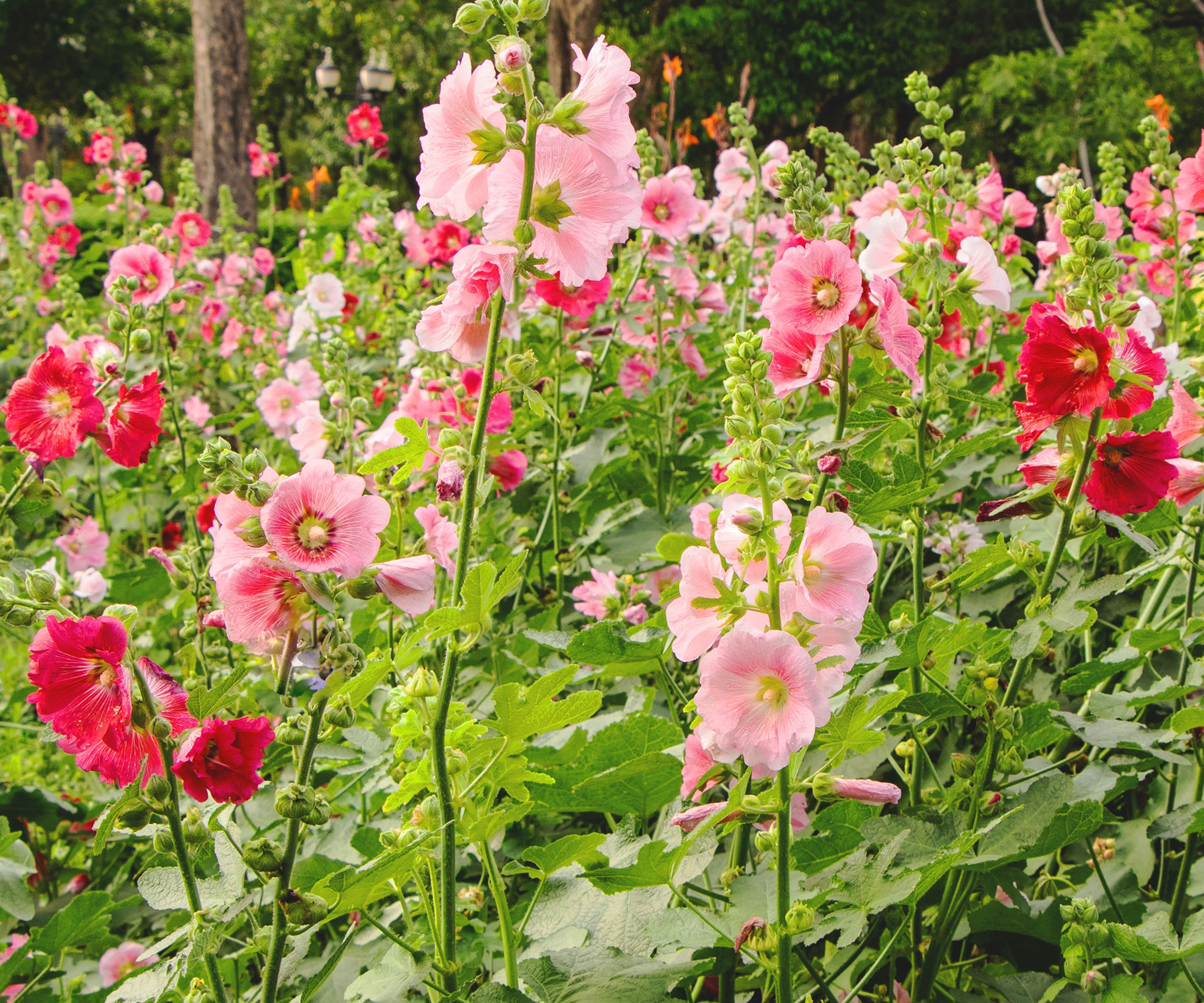
Watering Hollyhocks in Open Ground
Hollyhock irrigation is most effective when the water is delivered directly to the plant’s root zone. This can be done by hand using a watering can or through the use of drip irrigation and soaker hoses. Slow watering will allow for deeper penetration of the growing medium, conserving moisture.
Gardening tips, videos, info and more delivered right to your inbox!
Sign up for the Gardening Know How newsletter today and receive a free copy of our e-book "How to Grow Delicious Tomatoes".
Mulch can also be used to help reduce the frequency of watering and suppress any soil that may splash onto plant foliage. Watering from below, making certain to avoid wetting the plant’s leaves, is vital to the prevention of fungal disease and its spread. Hollyhock rust is of particular importance and is a certain cause of demise in severely infected plants.
Watering Hollyhocks in Containers
Hollyhock water needs when grown in pots and containers follow similar lines to plants grown directly in flower beds. Good drainage and consistent moisture create the most hospitable conditions for plants. Along with fertilizing hollyhocks, experienced growers do note an increased need for watering through summer.
A daily check of moisture levels can be helpful to be certain that pots are not allowed to dry, and that plants don’t become stressed. It is not uncommon for hollyhocks grown under these conditions to require supplemental watering every two or three days. Apart from this, watering hollyhocks shouldn’t be problematic.
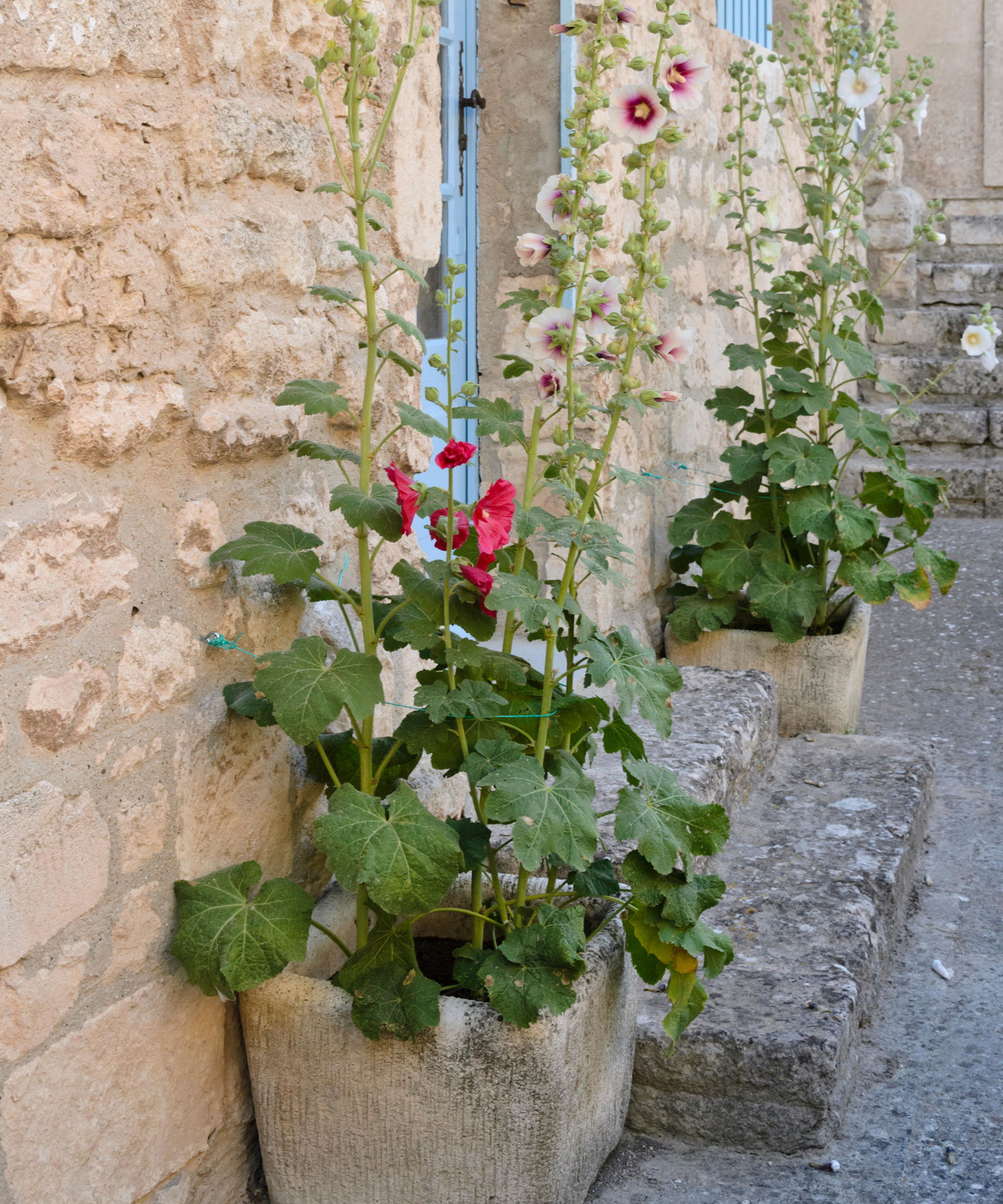
Watering Hollyhocks in Winter
Hollyhocks in winter remain dormant, with most plants dying back to the ground. These plantings only seldom require water, as excess moisture at this time is likely to lead to root rot and the loss of plants. Beds can be watered, with care, where winter conditions are mild and remain relatively dry. In cooler climates that experience freezing temperatures, avoid hollyhock watering until conditions improve in spring.
Frequently Asked Questions
How Often Do You Water Hollyhocks?
The frequency in watering hollyhocks will vary by garden. Consistent moisture throughout summer will help hollyhocks to flourish. Though rainfall may be sufficient to meet the needs of plants in some regions, growers living in those that are especially warm or dry should consider watering plants on a weekly basis, at a rate of around an inch (2.5cm) a week.
How Long Does a Hollyhock Live?
Hollyhocks are a biennial flower. This means that each plant will complete its life cycle over the course of two growing seasons. In the first year, plants will produce lush, green foliage. Hollyhocks then dieback, with the arrival of winter. The following spring, growth resumes, causing plants to elongate and finally begin to flower.

Tonya Barnett has been gardening for 13 years. Flowers are her passion. She has transformed her backyard into a cut flower garden, which she regularly chronicles on her YouTube channel http://www.youtube.com/@tonyawiththeflowers.
-
 Get Ready For A Summer Of Hummers! Grow These Full Sun Hummingbird Plants and Flowers
Get Ready For A Summer Of Hummers! Grow These Full Sun Hummingbird Plants and FlowersIf you’re lucky enough to enjoy a sunny backyard, make sure you are maxing out on your pollinator opportunities and grow these full sun hummingbird plants and flowers
By Tonya Barnett
-
 12 Lush Alternatives To A Lawn For Sustainable Spaces
12 Lush Alternatives To A Lawn For Sustainable SpacesAlternatives to a lawn are beautiful and also beneficial to your local ecosystem and its pollinators. Explore our top picks for plants to replace grass.
By Tonya Barnett
-
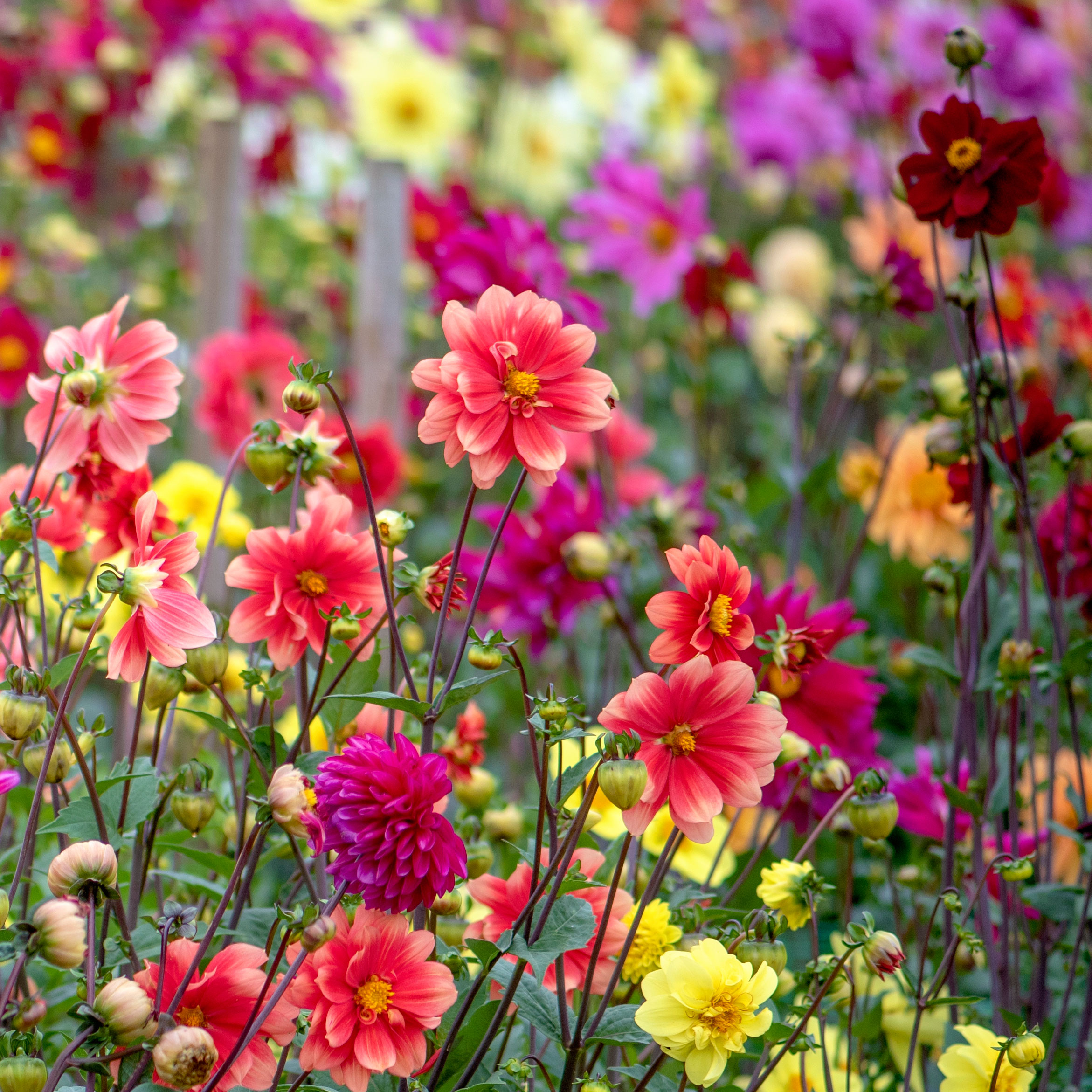 Cut Flower Garden For Beginners: 8 Easy Decorative Floral Plants For Newbies To Grow
Cut Flower Garden For Beginners: 8 Easy Decorative Floral Plants For Newbies To GrowAre you new to growing decorative florals for bouquets and ornamental displays? A cut flower garden for beginners is well within reach if you grow these flower seeds
By Tonya Barnett
-
 Spectacular Early Blooming Shrubs: 6 Sparkling Spring Flowering Bushes
Spectacular Early Blooming Shrubs: 6 Sparkling Spring Flowering BushesWant to kickstart your gardening year with dazzling spring flowering bushes for beds and borders? These unique early bloomers are sure to help you rise and shine!
By Teo Spengler
-
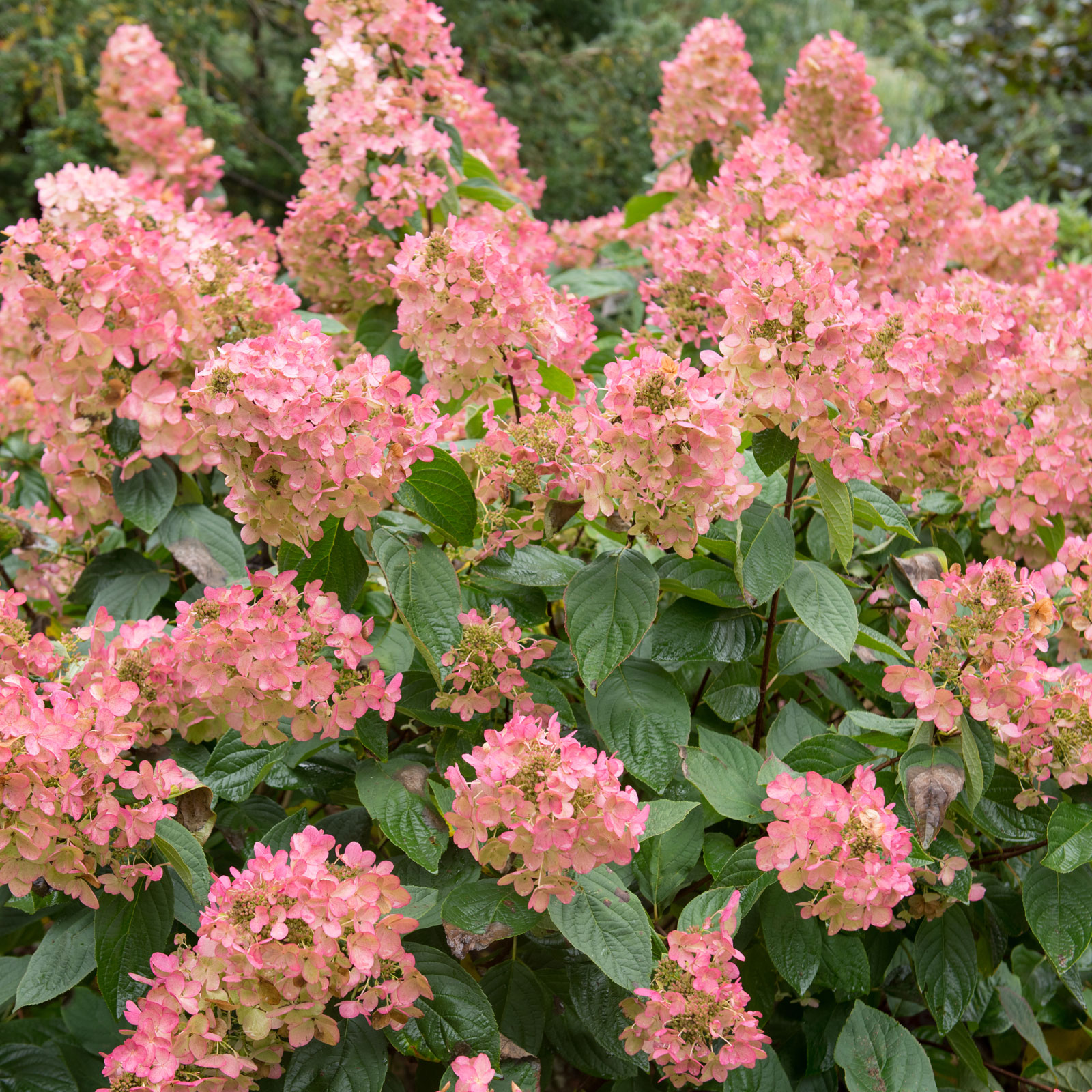 Quick Fire Hydrangea – The Elegant, Easy-Care Shrub Every Gardener Needs In Their Landscape
Quick Fire Hydrangea – The Elegant, Easy-Care Shrub Every Gardener Needs In Their LandscapeIf you’re after an early flowering panicle hydrangea that offers plenty of floral variety, the Quick Fire hydrangea goes big on visual dynamics from early summer to fall
By Tonya Barnett
-
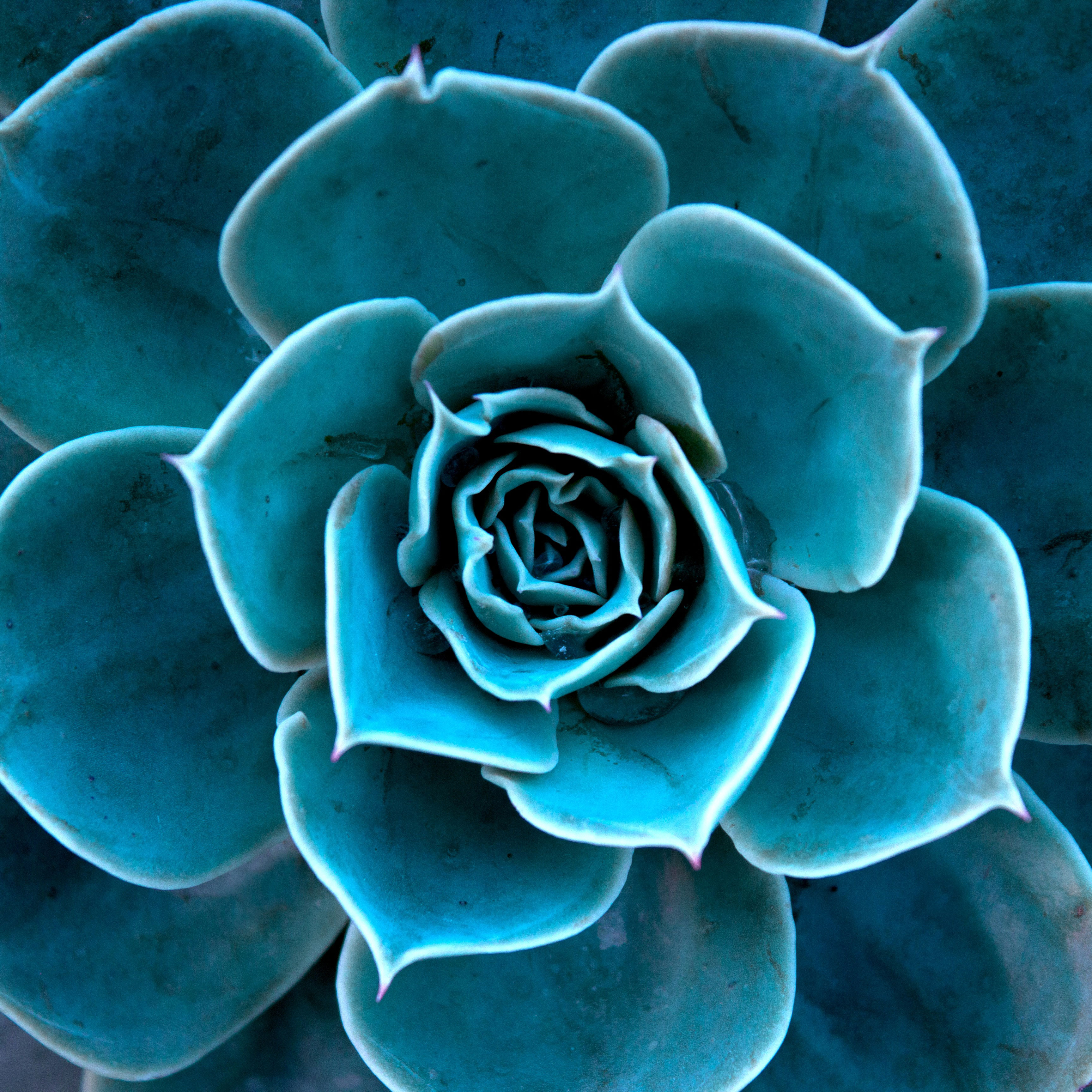 Time For Teal: 7 Terrific Teal Plants To Grow In Your Home Garden
Time For Teal: 7 Terrific Teal Plants To Grow In Your Home GardenIt’s an emerging color with a devoted following in fashion and interiors, but can you enjoy blue-greens in your garden? We round up the best teal plants you can grow
By Tonya Barnett
-
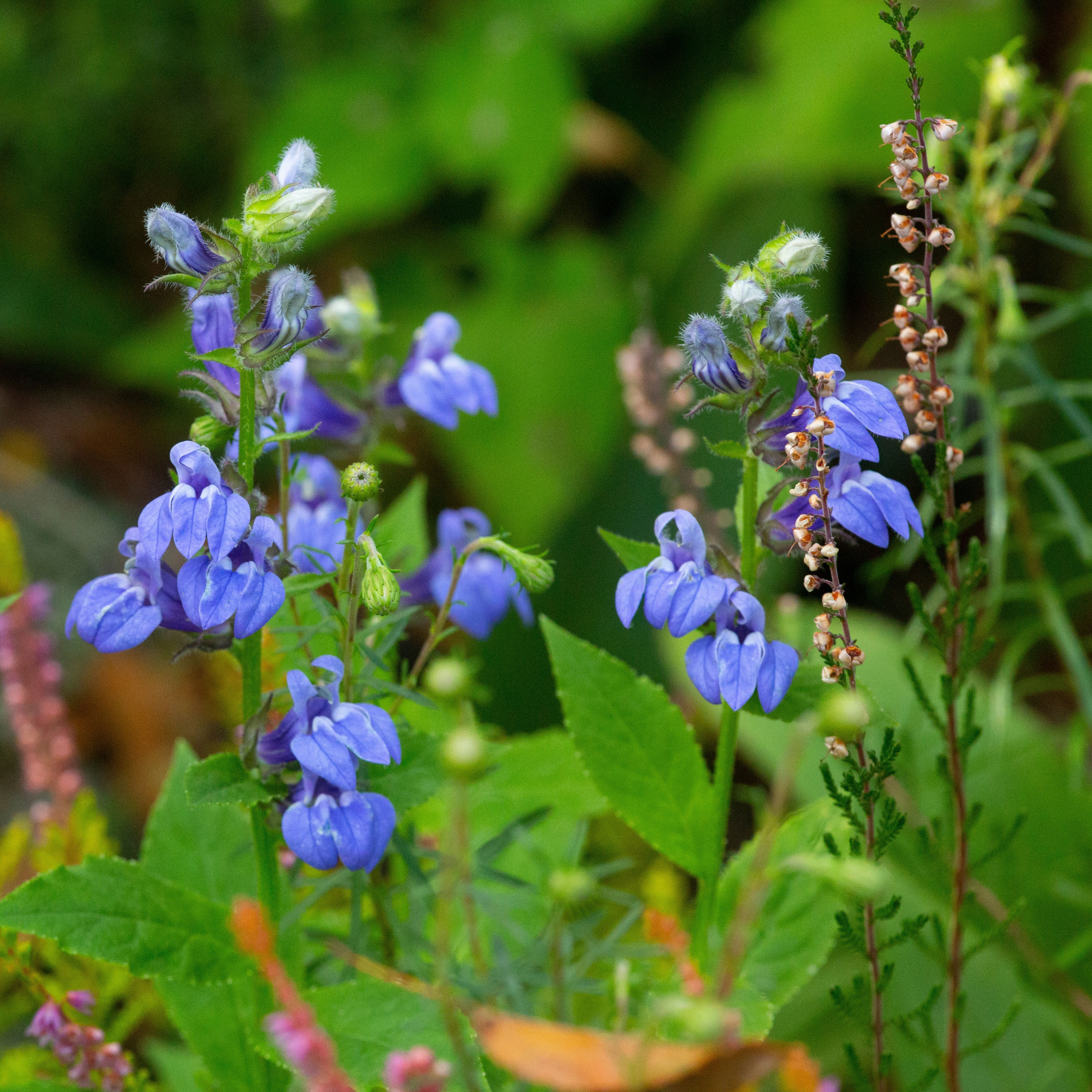 Grow Great Blue Lobelia: Native Blue Cardinal Flowers For Butterflies And Hummingbirds
Grow Great Blue Lobelia: Native Blue Cardinal Flowers For Butterflies And HummingbirdsIf you’re keen to enhance your native plants or attract more pollinators, blue cardinal flowers are an essential flowering perennial. Here’s how to grow great blue lobelia
By Tonya Barnett
-
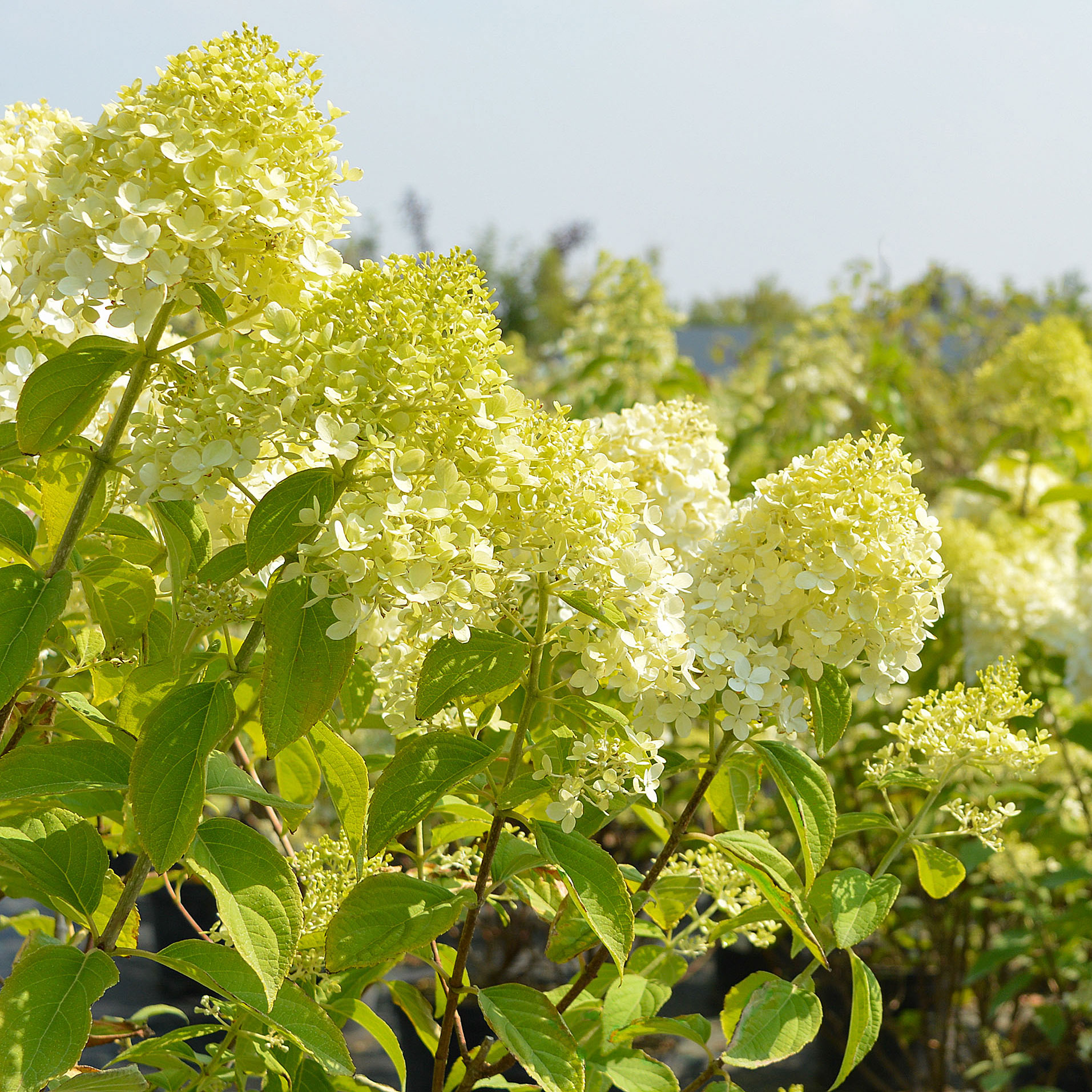 Grow Limelight Hydrangea Shrubs For Green Themed Displays And Brilliant Borders
Grow Limelight Hydrangea Shrubs For Green Themed Displays And Brilliant BordersIf you're a panicle hydrangea lover in search of flamboyant, long-lasting florals, knowing how to grow Limelight hydrangea shrubs will ensure gorgeous green blooms
By Mary Ellen Ellis
-
 Warm Up Your Winter With Indoor Reds! 8 Red Amaryllis Varieties For Sizzling Seasonal Interest
Warm Up Your Winter With Indoor Reds! 8 Red Amaryllis Varieties For Sizzling Seasonal InterestWell loved as a bold decorative holiday bloomer, the red amaryllis is a hot favorite for winter displays. These red amaryllis varieties are guaranteed to fire up the season
By Tonya Barnett
-
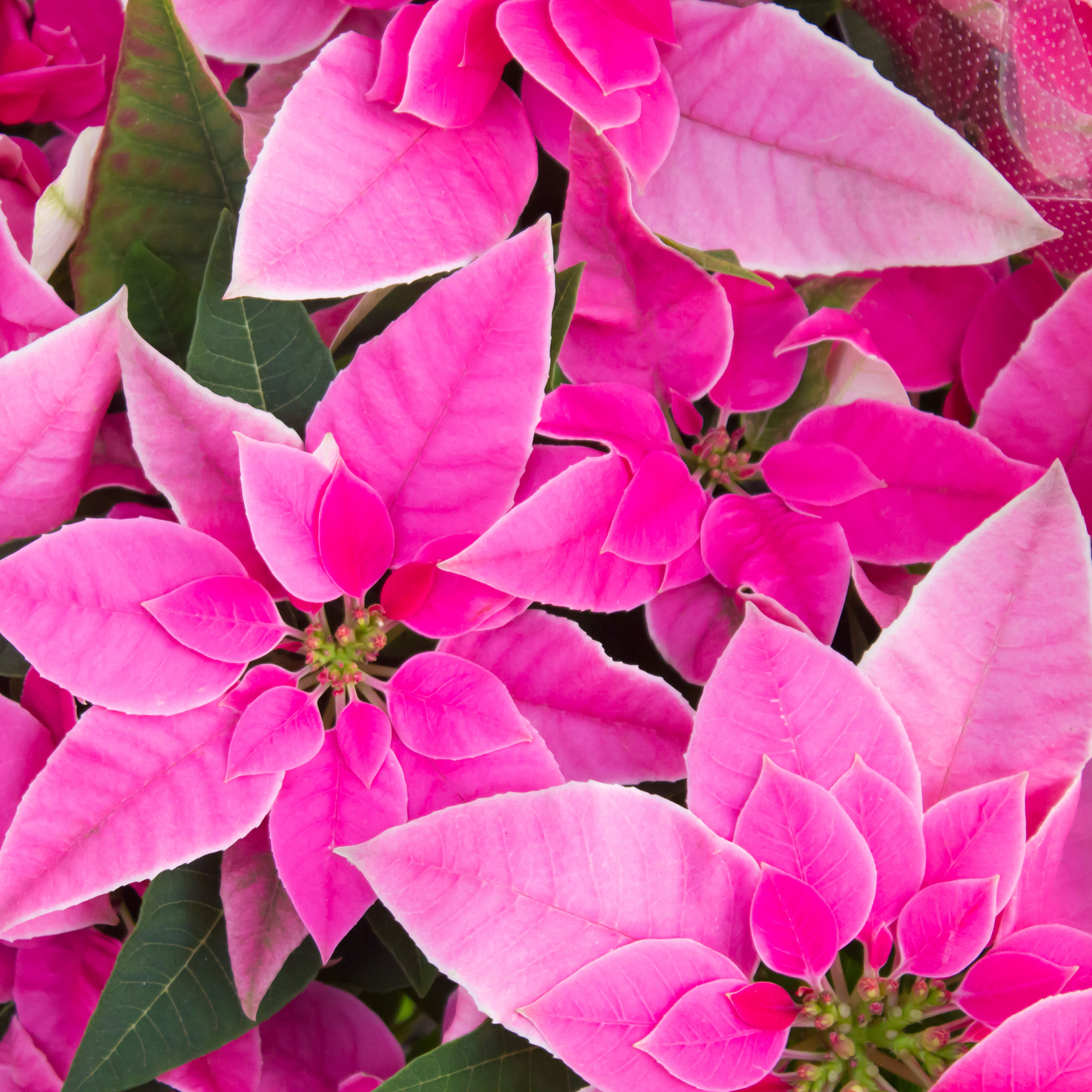 Poinsettia Pinks: 7 Pink Poinsettias To Grow For Neon Hot Tones And Cool Pretty Pastels
Poinsettia Pinks: 7 Pink Poinsettias To Grow For Neon Hot Tones And Cool Pretty PastelsWhile the traditional red poinsettia is a staple of many homes over the holiday period, they are not your only option. For cheerful brights or pastels, why not grow pink poinsettias?
By Tonya Barnett